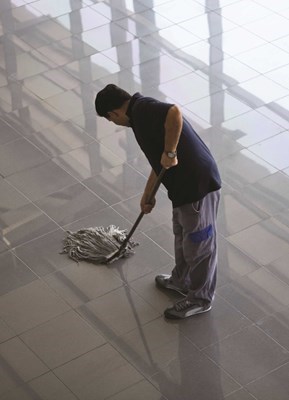
Editor's Note: To help prevent the spread of COVID-19 in your building or association, procedures and supplies should be in place to encourage proper personal hygiene, as well as routine cleaning and disinfection of high-risk locations. This guidance is provided by the New York State Department of Health so that owners, operators and other individuals can incorporate these procedures into their facility protocols.
Hand Hygiene
Signage with handwashing procedures should be posted in prominent locations promoting hand hygiene. Regular hand washing with soap and water for at least 20 seconds should be done:
Before and after eating
After sneezing, coughing, or nose blowing
After using the restroom
Before handling food
After touching or cleaning surfaces that may be contaminated
After using shared equipment and supplies like electronic equipment such as keyboards, mice and phones.
If soap and water are not available, use an alcohol-based hand sanitizer that contains at least 60% alcohol. Use of alcohol-based hand sanitizers by children should always be supervised by adults.
Routine Cleaning
All settings should continue performing routine cleaning. As part of standard infection control practices, routine cleaning should be rigorous and ongoing, and time should be allocated for individuals to routinely clean. High-risk locations and high-contact surfaces can be reservoirs for germs, creating an exposure pathway for transmission to people; therefore they should be prioritized for routine cleaning and disinfection . Examples of high-contact, priority areas for routine cleaning include surfaces such as light switches, handrails and doorknobs/handles. Clean and disinfect these areas on a periodic schedule as operational considerations allow, which may range from at least daily to up to every 72 hours. Other high-risk/high-contact zones include:
•All restroom surfaces, fixtures, door knobs, push plates, and switches (these should be cleaned and disinfected at least once daily)
• Desks, tables, countertops and chairs
• Door handles and push plates
• Bannisters and handrails
• Kitchen and bathroom faucets, appliance surfaces, and light switches
• Handles on equipment (e.g., handtrucks, dollies, carts)
• Remote controls and other shared electronics
• Shared telephones, computers, keyboards and mice
Cleaning & Disinfection
The terms ‘cleaning’ and ‘disinfection’ are not interchangeable. Cleaning removes dirt, impurities, and some germs from surfaces or objects. Disinfecting kills germs on surfaces or objects. Individuals should carefully read and follow all label instructions, and use whatever protective equipment (e.g. gloves) is recommended on product labels.
Step 1: Cleaning
Always clean surfaces prior to use of disinfectants in order to reduce dirt and other materials on surfaces that can reduce the effectiveness of disinfectants. Clean surfaces using water and soap or detergent to reduce soil and remove germs. For combination products that can both clean and disinfect, always follow the instructions on the specific product label to ensure effective use. In New York State, all state agencies and state authorities are required to use green cleaning products. For additional information on the laws regarding the use of green cleaning products, see the Policies, Guidelines and Report section of NY‘s Green Cleaning Program website.
Step 2: Disinfection
Cleaning of soiled areas must be completed prior to disinfection to ensure the effectiveness of the disinfectant product. Use the DEC list of products registered in New York State identified as effective against COVID-19. This list corresponds to those identified by the EPA GET LINK. If these products are unavailable, disinfect surfaces using an EPA- and DEC- registered disinfectant labeled to be effective against rhinovirus and/or human coronavirus. If these commercial products are unavailable, it is also acceptable to use a fresh 2% chlorine bleach solution (approximately 1 tablespoon of bleach in 1 quart of water). Prepare the bleach solution daily or as needed.
Label directions must be followed when using disinfectants to ensure the target viruses are effectively killed. This includes adequate contact times (the amount of time a disinfectant should remain on surfaces to be effective), which may vary between five and 10 minutes after application. Disinfectants that come in a wipe form will also list effective contact times on their label. For disinfectants that come in concentrated forms, it is important to carefully follow instructions for making the diluted concentration needed to effectively kill the target virus. This information can be found on the product label.
Step 3: Disposal
Place all used gloves and other disposable items in a bag that can be tied closed before disposing of them with other waste. Wash hands with soap and water for at least 20 seconds immediately after removing gloves, or use an alcohol-based hand sanitizer if soap and water are not available. Soap and water should be used if hands are visibly soiled.
Procedures and Training
If there is a confirmed case of COVID-19 in your facility, perform cleaning and disinfection of all surfaces throughout the area. Cleaning and disinfection should be conducted by individuals who have been trained in safe and effective product use. Training should be ongoing to ensure that procedures for safe and effective use of all products are followed, and that individuals read and follow use and safety instructions on product labels. It should also identify the location of all personal protective equipment (e.g., gloves) that should be used.
For more information, visit the New York State Department of Health’s COVID-19 webpage:, or your own city or state government's health resource pages.






Leave a Comment